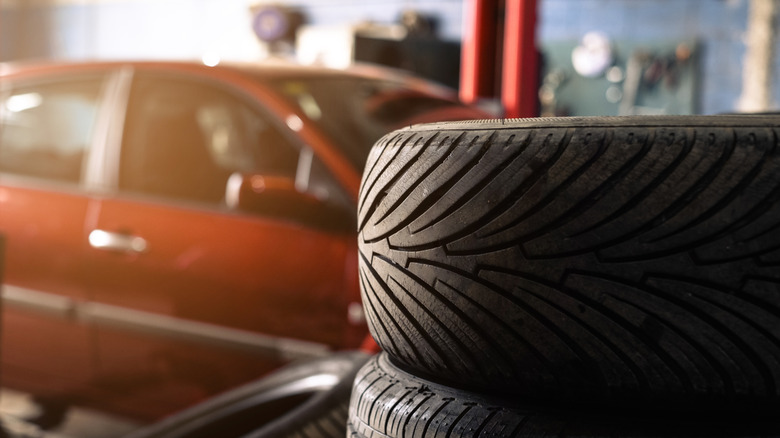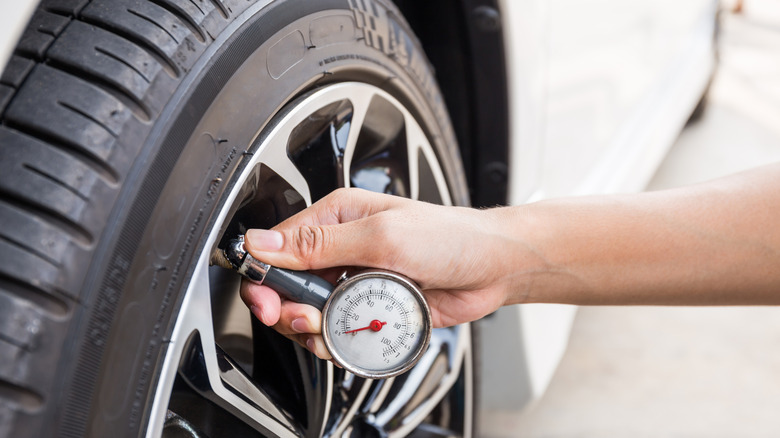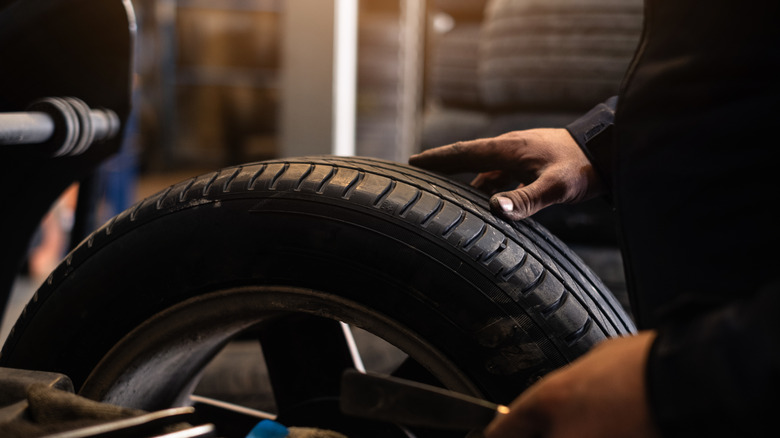How To Prevent Dry Rot On Your Tires
Regardless of how often they are driven or maintained, the tires on our cars are on a ticking clock. On average, the lifespan of a fairly decent tire runs anywhere from 6 to 10 years from the date it's produced. While there are plenty of bad habits that can hasten the decline of tires, the more prominent culprit behind a tire's deterioration is dry rot.
Dry rot is when tears start to emerge along the outside portion, or sidewalls, of the tire, often due to exposure to elements such as damaging chemicals, intense weather conditions, or extreme changes in temperature. As exposure to these dry rot conditions increases, the more likely the tire will be unable to contain air pressure and will be more vulnerable to potential punctures or blowouts mid transit.
There are a number of ways that drivers can tell if the tires on their car are experiencing dry rot as the signs are fairly visible to the naked eye. Discoloration, fractures in the tire's tread pattern or sidewall, or if the rubber material feels hardened and friable are all key indicators that dry rot is present. Since replacing tires can be a costly and time-consuming process, it's always best to act preventatively. Below is a list of different ways drivers can stave off or even slow down the decaying effects of dry rot in their tires.
Proper tire inflation and maintenance are key to shield against dry rot
One of the predominant causes of dry rot in tires beyond the normal wear and tear is inadequate inflation. When a tire does not have enough pressure, it generates more friction and heat while on the road, which in turn speeds up the cracking and brittleness of the tread. Instead of waiting for the tire pressure symbol to light up on the dashboard, performing regular pressure checks can go a long way toward maximizing the longevity of your tires. Many automakers have improved means that can help you easily gauge the health of your tires, such as the Toyota tire pressure app or through direct TPMS (Tire Pressure Monitoring System), which tells you the exact pressure in each of your tires right on your dashboard.
In tandem with adequate tire inflation, proper maintenance can also prove highly effective in shielding against dry rot. Using water-based solutions for cleaning tires is more advantageous in the long term because harsh, corrosive chemicals can speed up the degradation of the rubber and other materials. Avoiding prolonged tire exposure to heat from sunlight by parking the car in shaded areas or a garage is another way to maintain the quality of the tires.
It is also worth bearing in mind that the date of manufacture of the tires may not be the same as the car itself. Usually there is a series of four numbers printed along the tire's sidewall, with the last two digits representing the year the tire was made. This is a good method to keep track of the number of years the tires have been in use, and when it may be an ideal time to have them replaced.
Knowledge of load capacity and tire brands are also useful in combatting dry rot
There are other daily measures that can be taken to extend the longevity and resilience of tires. For example, traveling for long durations with excessive weight that's beyond the tire's load capacity can accelerate the rate of dry rot and failure. Being mindful of both load limits of the vehicle and the tires can save a lot of time and costs in the long run. Having the tires checked and rotated during regular inspections is also an effective means of staying attuned to any potential problems before they actualize.
If the tires aren't being used for extended periods of time, it's recommended to store them in temperature-controlled spaces away from any harmful chemicals or electrical machines. When the time comes where the tires do need to be replaced, knowledge of the major tire brands and the quality of their products can help provide an inherent barrier against dry rot.
The critical underlying element to all these helpful measures is consistency. Taking the time to follow through on these methods on a regular basis will yield positive results, ensuring your tires remain dependable for quite some time.


